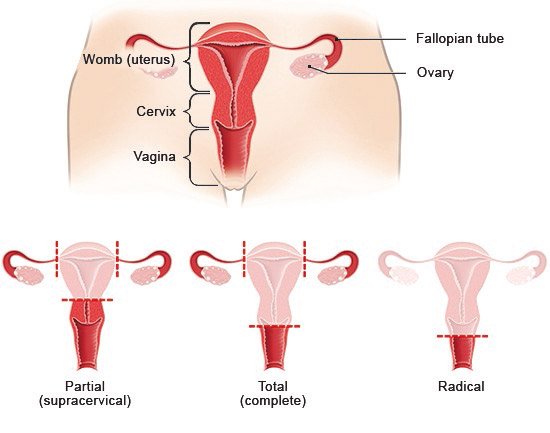Hysterectomy (surgical removal of the womb)
A hysterectomy is surgery to completely or partially remove the womb (uterus). This is done to relieve symptoms caused by medical conditions affecting the womb. It is a major surgical procedure that is associated with risks and side effects. So it is usually only considered if other treatments aren’t effective enough. If a woman has uterine or ovarian cancer, though, a hysterectomy may be necessary in order to remove the tumor.

